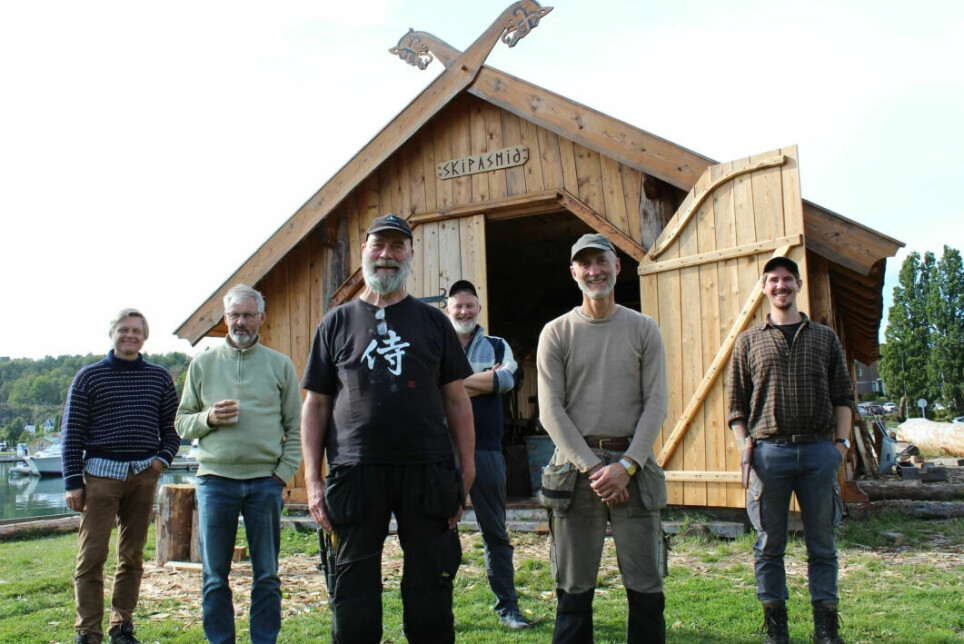
How do you build a Viking ship? These woodworkers are joined by researchers on their third Viking ship project
The prow of a Viking ship rises over Vikingodden in Tønsberg, Norway. The ‘Gokstad ship’ is being rebuilt.
“It’s behaving a little differently here — it’s springing up again!”
The log the woodworkers want to split is giving department manager Tore Forsberg headaches, while also causing him and his colleagues to burn a few extra calories. The axe doesn't slice through the log like it usually does.
The sounds of loud male voices and axe blows drown out the electric cars whizzing past the city centre. A small piece of the Middle Ages has found its place here in Sandefjord, southwest of Oslo, on Norway’s southern coast.

Fuels curiosity
Oak logs as big as cars lie waiting to be split into ship planks. Thin oak shavings are spread like a carpet over the entire area, which is scented with the aroma of wood combined with the smell of the sea.
Over the course of four years, these logs will become part of the finished copy of the ‘Gokstad ship’, which is being built by the Oseberg Viking Heritage Foundation. The ‘Gokstad ship’ was excavated in 1880, and is the world's largest preserved Viking ship.
The materials are being crafted in the middle of Sandefjord, while in the neighbouring town of Tønsberg they are fine-tuned and assembled into a finished ship.
Curious people come and go — both Sandefjord residents and tourists. Many follow the process from week to week. It’s a process that continues both in summer and winter and that everyone is welcome to take part in.
Perhaps the difficult log that is on the programme today is challenging to deal with because of very early stage rot, says Svein Solberg. He is a senior researcher at NIBIO, the Norwegian Institute of Bioeconomy Research.
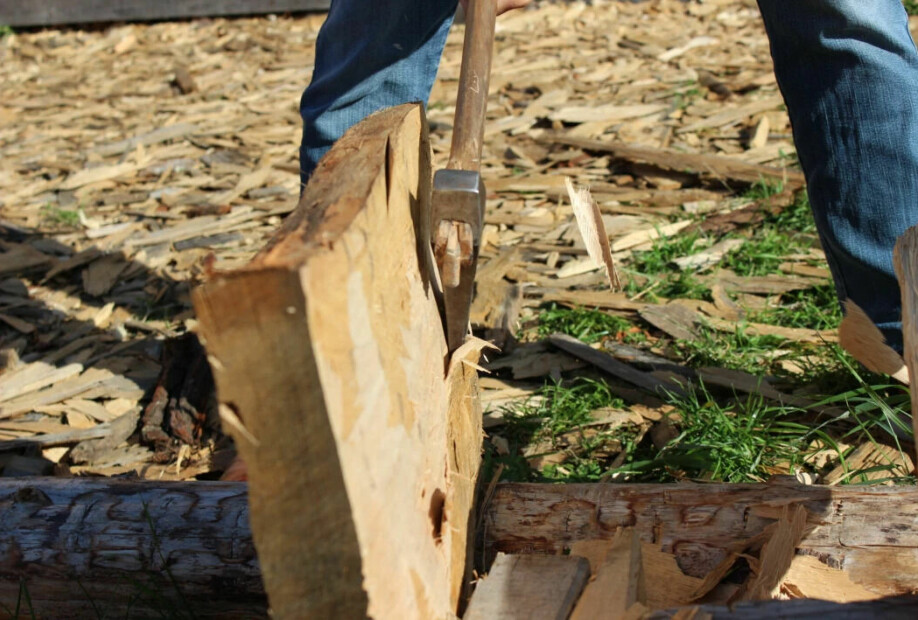
An old dream
The research project, which has been ongoing for a year, began with a dream Forsberg has had for many years.
“I have long dreamed of bringing as much of our traditional crafts as possible into the present day and into modern architecture,” Forsberg said.
When he is not building Viking ships, he does other woodwork and traditional crafts and thinks it is important to put this traditional Norwegian knowledge to work.
Anders Qvale Nyrud is a professor at NMBU, the Norwegian University of Life Sciences. He is also on the secretariat for the World Conference on Timber Engineering, which will hold its annual conference on modern wooden architecture in Norway for the first time in 2023.
This connection led Forsberg and Nyrud to get to know each other. They met at NMBU a few years ago and found that they have a lot in common in their respective fields.
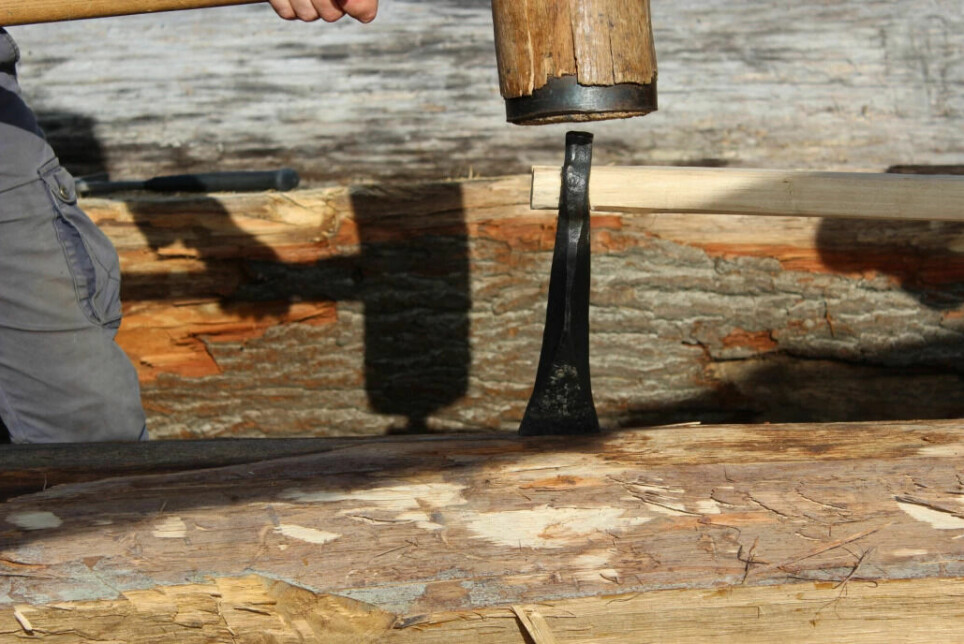
One hundred hours — a useful start
Nyrud has studied wood processing in the industry — in this case, using power tools and machines. In the last year, however, he has been involved in the Viking ship research project in Vestfold, which is being done completely by hand.
His work is a preliminary project, and has been funded for a hundred hours. It will form the foundation for further research.
“It is based on the fact that I so very much want to collect traditional knowledge that can also be important today,” Forsberg said.
“It’s useful. You can figure out what is important in terms of further research,” Nyrud said.
The goal is for the project to benefit today's construction techniques and forest management — and not least the people who work with traditional crafts.
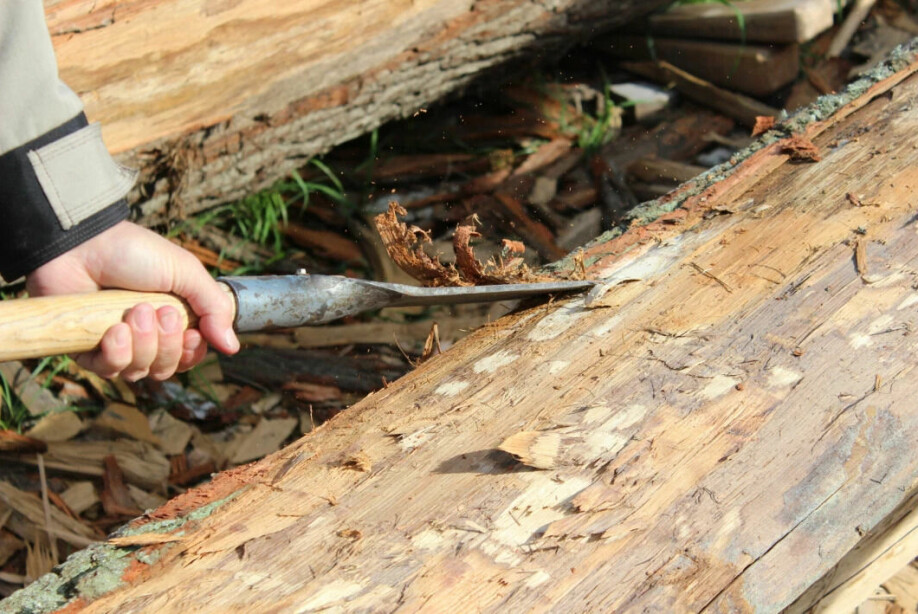
The wood is important
“This research is aimed at a very special use,” Nyrud said, as he looked over at the men with axes and mallets.
The air is cool on this particular Wednesday in September, but there is still some warmth in the sun, and the mallet is heavy enough that those who use it have to take off their jumpers.
“Traditional craftsmen work more broadly. But they also have special needs related to the wood they are given to use,” Nyrud said.
And this is precisely how Nyrud and the rest of the team think that their knowledge and experience with wood can be useful to others as well.
“Hearing how the wood cracks and seeing the results afterwards allow us to say something about the quality of the wood and how the tools are adapted to the various processes,” he said. “There is a great intrinsic value in working with the techniques and seeing how this work was done. It helps to preserve our cultural heritage.”
“We are preserving an intangible cultural heritage. It’s one small way to preserve and keep this heritage alive,” Forsberg said.
Keeping Norway’s cultural heritage alive is considered more important now than it has been in years past. This is also true when it comes to stave churches, the uniquely constructed churches that are an important part of Norway’s cultural heritage.
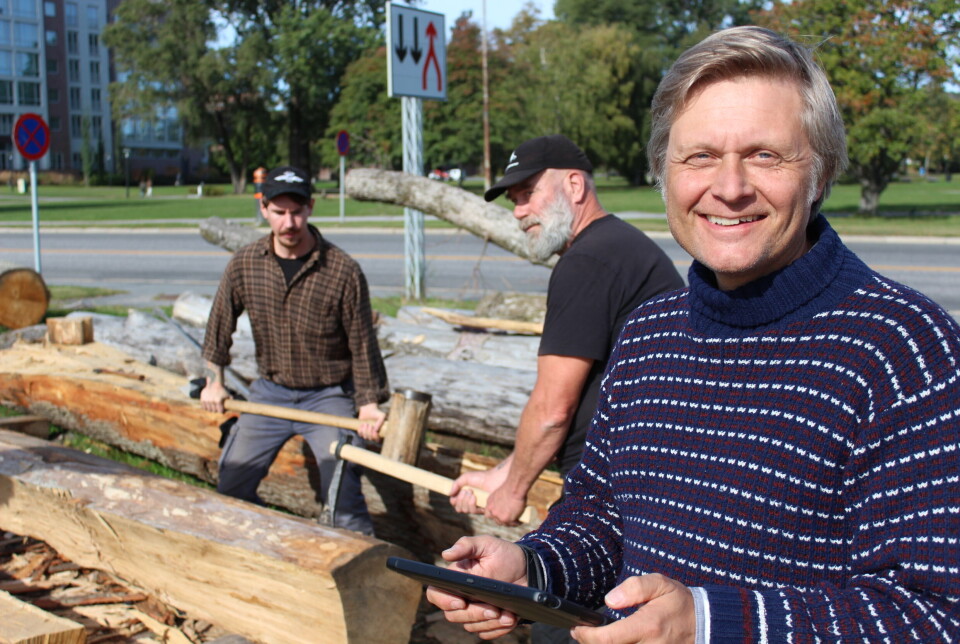
Unusual project
It's not every day that we hear about researchers and woodworkers working hand in hand. But in this project, that’s kind of the point.
“The woodworkers have collected knowledge that they would like to have systematized,” says Christer Tonning.
As an archaeologist at the Vestfold and Telemark County Council, Tonning has also worked extensively on digitizing archaeological discoveries made around the county, including by private individuals with metal detectors.
With the goal of accessible knowledge as a starting point, it’s clear that this information first has to be written down and saved. The lack of written documentation is why understanding medieval methods can be so challenging. Now the woodworkers and researchers want to make it easier for people who want to make copies of Viking ships in another thousand years.
Tonning is now contributing to the research project by designing a system, a kind of form, where you can enter characteristics about the trees processed in Sandefjord. And about how they are split. For example, which tools are used.
The form has to be easy for both researchers and woodworkers to use.
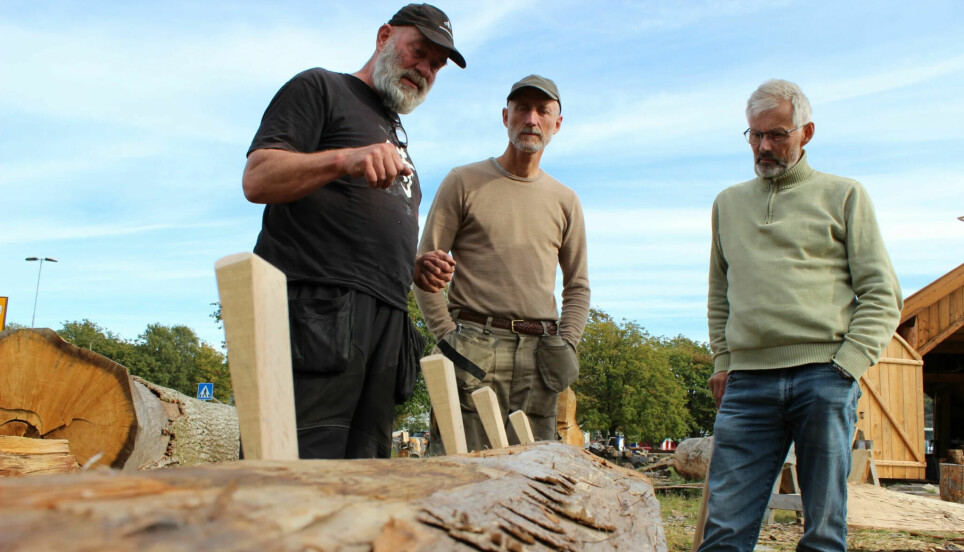
Just wanted a new hobby
Eventually, Svein Solberg also joined the research project. Initially, he joined as a volunteer.
He primarily works with forest health and climate stress. In other words, things that happen to the forest when the climate changes.
“I'm actually here because I wanted a new hobby. I have a cabin nearby, and so I signed up as a volunteer,” he said.
He wanted to be out of the office and away from the keyboard and thought that Viking shipbuilding was a suitable contrast to his everyday life as a researcher.
Now he has been able to take part in splitting and chopping wood for ship planks and other things. He has worked his way up through the ranks from rough work at the start, to finer work as he has mastered various tasks.
But it didn't take long before the forest researcher with his new hobby got involved in a research project — in spite of himself.
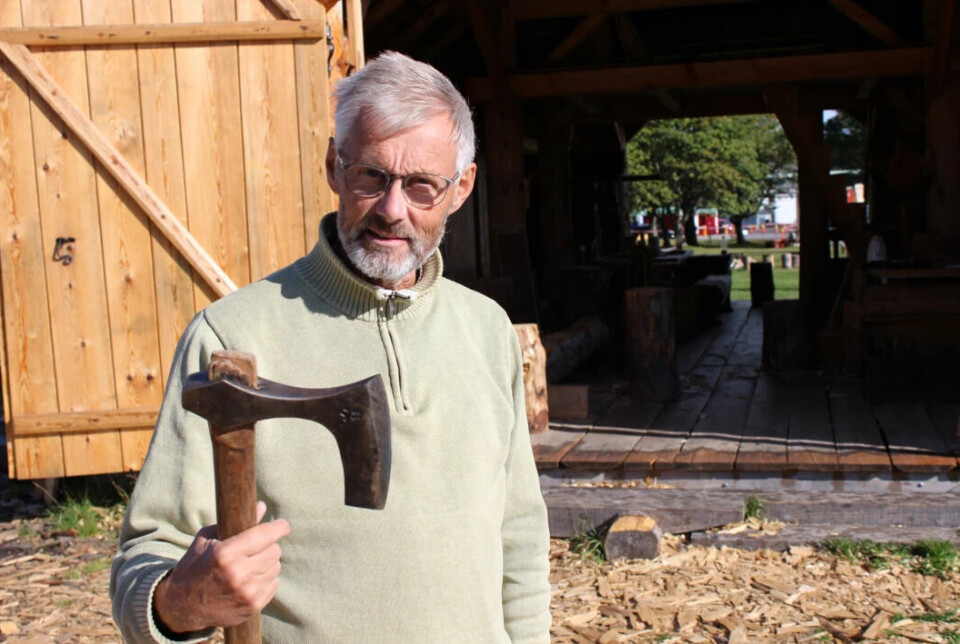
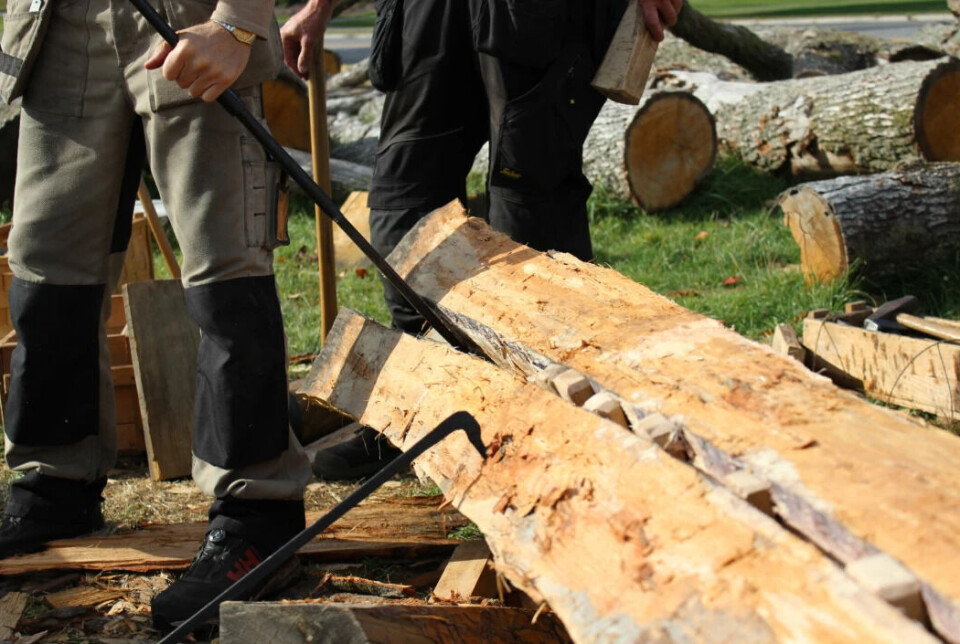
Water-powered sawmills eliminated medieval methods
For any Viking shipbuilder, the first step is to go into the forest and find the right trees.
“We choose logs with the idea of what we are going to create,” said Jan Knutsen, construction manager for the Oseberg Viking Heritage Foundation.
Knutsen is the construction manager for everything that is built at the foundation, while Forsberg, in turn, is department manager in Sandefjord.
The tree is felled and transported to the building site. There it is debarked, split and chopped with an axe.
Splitting is done with a splitting axe, mallet and wedges. Before the splitting begins, the craftsmen plan how the spilt will run, meaning where it will be best to split the log. The structure of the wood grain determines this.
Much of the old knowledge that was used in the Viking Age and for the old Viking ships was lost when water-powered sawmills came into use during the 16th century.
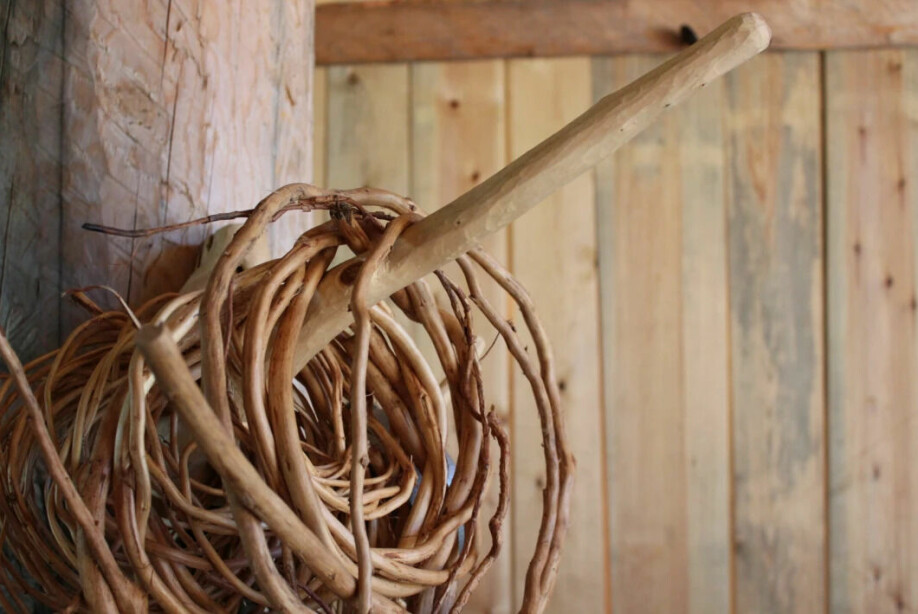
Building on the wood's natural strength
The goal is to cut along the wood’s grain as much as possible. This approach makes the wood planks stronger, Knutsen said.
And because trees grow with a certain twist, you cannot split straight through the log if you want to ensure that as much of the grain as possible remains intact. Nor is it possible to twist the saw as you cut. That’s why splitting the logs is important.
The process involves knocking wooden wedges into the log, where it will naturally split.
After splitting, the surface wood and pith are cut away. These are the outer and inner parts of the tree. This wood is softer and rots easily — and thus cracks more easily.
As much material is removed, thick logs are needed to make planks.
“We try to get one hundred per cent heartwood in everything we make,” Knutsen said. He says that thanks to the technique, the Vikings were able to reduce the amount of materials they used in their ships, simply because they made sure that each part was as strong as possible.
“This is an important part of the Vikings' success story,” Knutsen said.
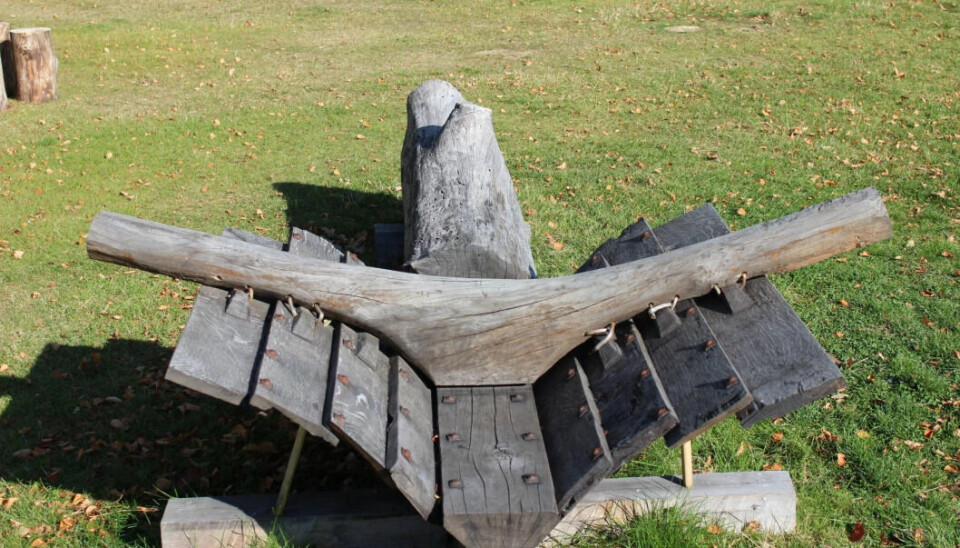

Old cuts shed light on methods
One axe is not enough for this process.
“The axe shapes the tree, and at the same time the tree shapes the axe,” says Joel Karl Isak Eriksson, a master's student in forestry at NMBU.
An axe for each use, that is. Much of the axe's history can be found hidden in the walls of old buildings.
“Old buildings and old boats are archives that reveal the methods that were used to construct them. Something as simple as a cut can provide answers about the angle of the edge, the length of the shaft and what characteristics the axe had,” Eriksson said.
Thought it was wrong to stop after the project was done
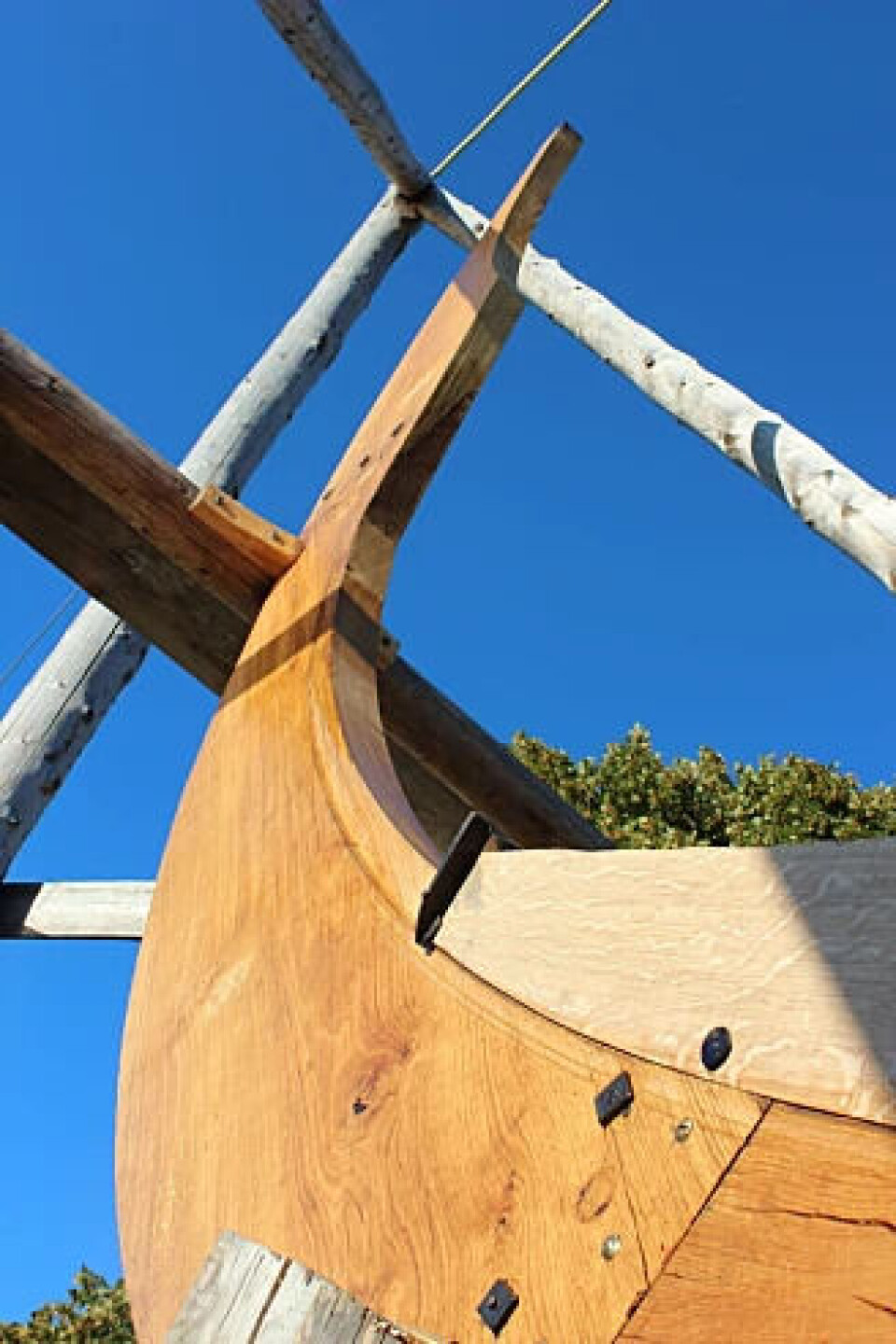
“We thought it was too bad that Sandefjord had a copy of the Gokstad ship while Tønsberg had no copy of the Oseberg ship,” Knutsen says.
He is referring to a copy of the Gokstad ship called 'Viking', built in the late 19th century and on display at the World Expo in Chicago in 1893. With this replica Viking ship in mind, the ball started rolling.
‘Saga Oseberg’ was launched in the summer of 2012 under the gaze of the Norwegian king and queen. After this success, the group behind it thought it was a shame to shut down the foundation — even though their initial job was done.
So they started instead on the next ship, a copy of ‘Klåstad’ — christened ‘Saga Farmann’.
According to the foundation’s philosophy, all of the work should be completely open to the public, both for those who want to follow along and those who want to contribute.
“People from all corners of the world have participated,” Knutsen said.
The foundation itself employs seven salaried men.
Vikingodden
Emil Melchior Dahl works as an apprentice at Vikingodden in Tønsberg, where he is earning a certificate in boat building.
The copies of the ‘Oseberg’ and ‘Klåstad’ ships were built here. Now the prow of the new Gokstad ship rises in the same place.
It will take four years from now to build the Gokstad copy, if all goes according to plan. They have already been at work for a year.
“I can see that it’s going slower. But then it's a lot more fun when it's finished. It feels bigger than when you only use power tools,” Dahl said.
Knutsen himself has a professional certificate in boat building. As a young man, he had a dream of becoming an archaeologist.
“I have now found the perfect combination,” Knutsen says with a big smile.
You probably can’t get any closer to an intersection between archaeology and boat building.

Translated by Nancy Bazilchuk
———
Read the Norwegian version of this article at forskning.no
------

































